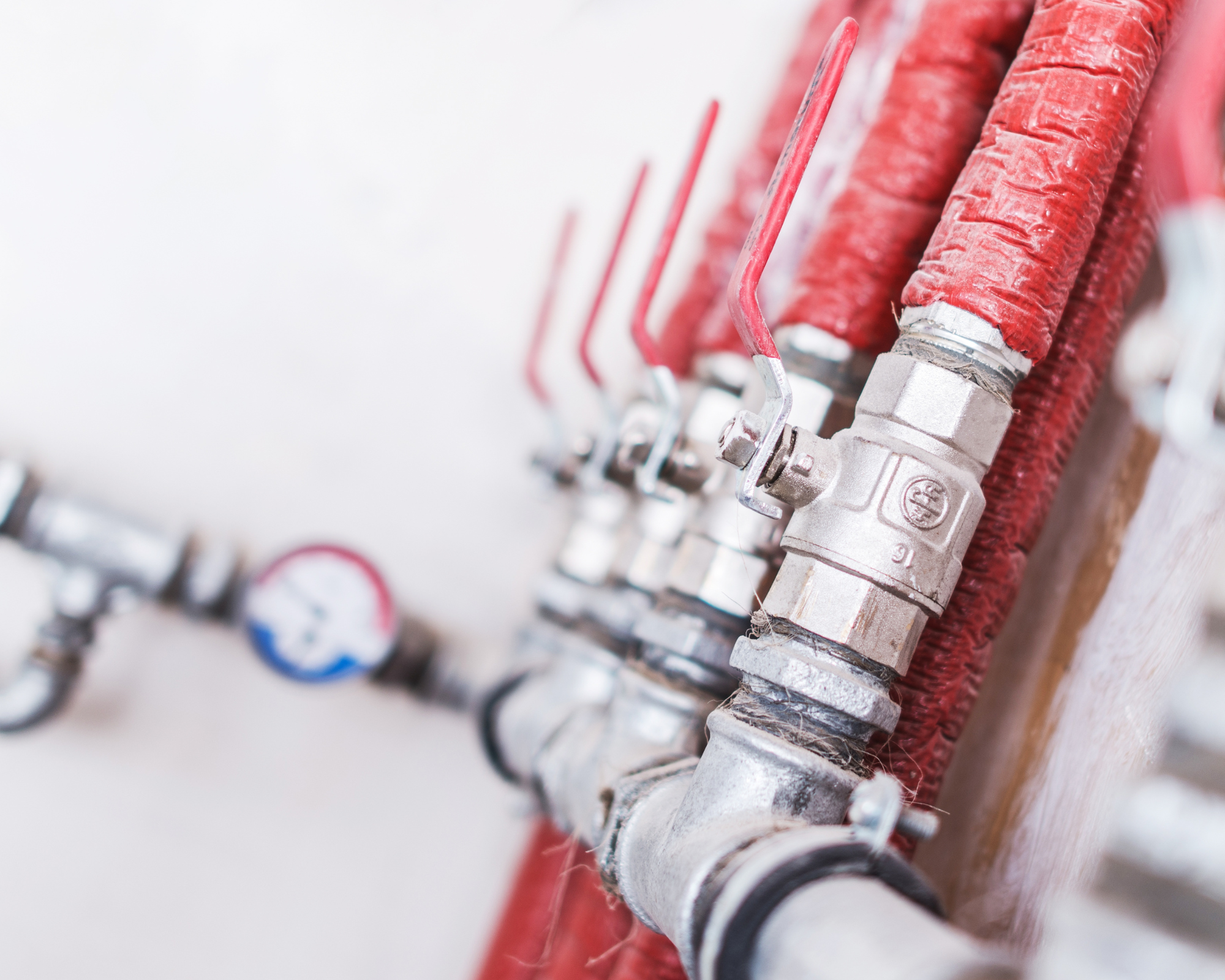Welcome back to our series on closed recirculating water systems. Last time out we looked at the maintenance required to keep closed systems healthy and working efficiently which included the addition of speciality chemicals such as corrosion and scale inhibitors. We finished on the point that where using these chemicals it is essential to maintain a specific ‘reserve’ or concentration of these products within the water system and to monitor this requires samples to be taken, but how many, where from and at what frequency? When considering the testing can on-site analysis be sufficient or do the samples require analysis in a laboratory setting?

Author
The article was written by Kris Rowland, our Head of Technical, Training and Compliance. Kris has more than 20 years of experience in the industry and is responsible for monitoring our clients’ compliance with the assets we manage on their behalf using ZetaSafe, our bespoke compliance monitoring tool.
Sign up to our newsletter
Keep up to date with the world of water treatment
Navigating Routine Monitoring in Closed Water Systems: Insights from BSRIA's BG50/2021
Let’s start by exploring the frequency of ‘routine’ monitoring. BSRIA’s BG50/2021 clearly indicates that the frequency of ‘routine’ monitoring will depend on the operation and physiochemical conditions present in the water system, for example where a water system indicates a good record of control with minimal water loss and is being well managed then monitoring every three months is appropriate. However more frequent monitoring is required where there is evidence of deteriorating water quality, loss of system volume through leaks or where work is being carried out on the water system. In these scenarios BSRIA recommends monitoring each month and goes further to recommend monitoring every two weeks where a system is being handed over, is in the process of being cleaned or shows a history of uncontrolled water loss. So, now we can confidently state that the maximum frequency for monitoring of a closed system is every three months, what are we monitoring for?
Ensuring System Longevity: Assessing Material Stability in Closed Water Systems
Well in addition to any speciality chemicals which are being used to minimise system corrosion and scale formation we also need to check the stability of the materials which comprise the system components, this can be by means of:-
- Samples submitted for laboratory analysis
- On-Site testing using
drop test kits, colourimeters, titrators, photometers and various electronic meters for parameters such as electrical conductivity, TDS and
pH - Ultrasonic testing of pipe wall thicknesses
- Endoscopy
- Monitoring of corrosion
rates by installation of metal coupons - Use of ’real time’ probes for measurement of dissolved Oxygen, temperature, make-up volumes and pressure
From the list above we can see that ‘monitoring’ includes activities other than taking water samples, a point which is sometimes overlooked even by seasoned professionals. In practise however where a water system demonstrably shows a good record of control water sampling tends to be the most commonly used method of monitoring with common parameters listed in BSRIA’s and the British Standards guidance documents being analysed
routinely. Typically, these will include both chemistry and microbiological parameters such as the following:-
- pH
- Electrical Conductivity
- Suspended Solids
- Total Iron
- Soluble Iron
- Total Copper
- Soluble Copper
- Chloride
- Total Hardness
- Alkalinity (both Methyl and Phenolphthalein)
- Total Viable Counts
- Sulphate reducing organisms
- Nitrite reducing organisms
- Pseudomonads
These parameters try to give a holistic view of the general conditions found within the water system at the location and time of sampling but can be supplemented by additional parameters dependant on the chemical treatments being employed or specific materials of construction such as the aforementioned Aluminium. To aid in the interpretation of the results both the British Standards BS8552 and BSRIA give advice and reference values or ‘permissible limits’ for each parameter along with an explanation of the relevance of the parameter. By utilising these and the possible remediations suggested in the guidance documents a scheme of improvement works can be created and implemented to improve the health of the closed water system and its component parts.
Determining Quantity and Locations for Effective Monitoring in Closed Recirculating Water Systems
Next, we must turn our attention to the question of where and how many samples to take during monitoring. As you would expect one sample is never enough and there is no numerical value that would fit every closed recirculating water system as they all vary in size, complexity, and operation, however this does not mean that a suitable number of samples cannot be calculated reliably. The starting point in calculating the number of samples to be taken should be the total system volume and number of ‘terminal units’ installed on the water system, for example a water system with a total volume of between 3000 and 8000 litres with 25 to 80 terminal units would require one sample taken from the plant room and three remote samples (one fixed location and two random) taken from the circulating system. Of course, thought must also be given to the suitability of points chosen for the remote samples as specific parameters will require sampling from dedicated locations and should the wrong location be chosen then sample results unrepresentative of the current system conditions are likely to be obtained which can lead to an incorrect treatment or remediation plan. More detail including sample calculation tables and sampling points can be found in BS8552 and BSRIA’s BG29 and 50 guidance documents, in theory by following these recommendations a sampling organisation should be adequately equipped to gain a holistic view of the health of any closed recirculating water system.
Key Considerations for Accurate Monitoring in Closed Recirculating Water Systems
Lastly, we are left with the question of how should samples be collected from closed recirculating water systems? Is it as easy as finding the sampling point and filling up a bottle? As again expected, the answer would be no, for just as if the wrong sampling point is selected an incorrect or unrepresentative impression of the water systems condition can be reached this is also true if the sample is not collected correctly. Binder points, drain valves and dosing pots are among the most common areas where samples can be obtained, and all come with their own unique pitfalls which can affect the integrity of the samples collected. The guidance contained within the British Standard and BSRIA goes into much detail on how best to obtain samples from these locations however there are some general points which can be considered when taking samples from across the water system. Firstly, the initial volume of water discharged from any sampling point should not be tested as this can create dependant on the location of the sampling point and system operation an unrealistic impression for example, of the solids content – either high or low. Therefore, typically the so called ‘first catch’ of water should be discarded in favour of a more representative sample. Secondly, where sampling from dosing pots consideration should be given to the physical condition of the asset, is it showing signs of corrosion or solids build up? is it open to circulation with the water system or is it isolated creating its own little ‘reaction pot’ which if sampled directly will lead to a highly unrepresentative impression of the system conditions? Remember no matter where samples are obtained from if thought is not given to their collection and they are not obtained in the correct manner it is highly likely that the results following analysis will not be representative of the water system as a whole and will likely result in more unnecessary expenditure including sampling, remedial cleaning, and chemical or filtration addition.
We hope you have enjoyed our dive into the maintenance of closed recirculating water systems during these last three articles. As ever there is always more to learn so I encourage those with responsibility for the management of these system types to fully acquaint themselves with the guidance provided by BSRIA and the British Standards.










